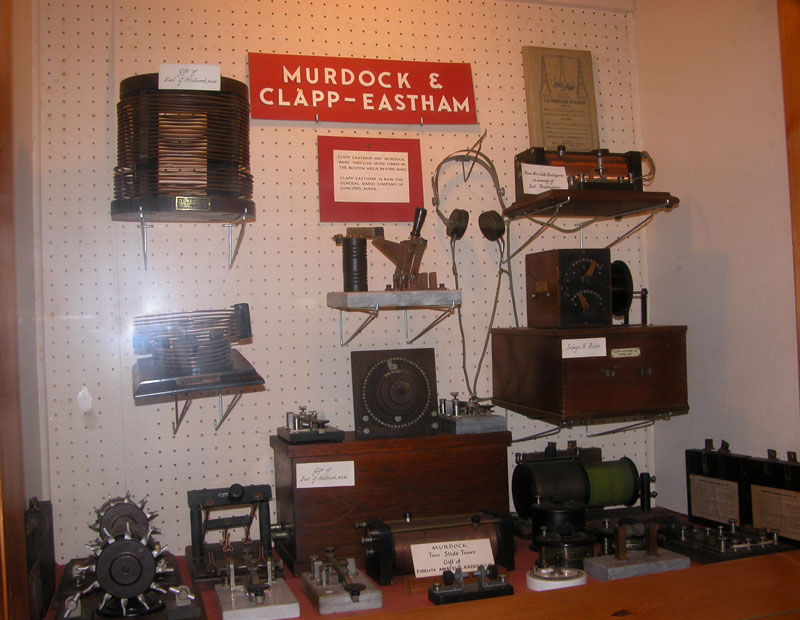Fred – “You liked General Radio, didn’t you? You thought they were a good company and they made good equipment?
They made excellent equipment, the finest kind of stuff. But they liked using marble for the bases. These are different products of those two companies.
This is a rotary spark-gap. A little motor spins the wheel around and it gives a picket fence effect to the note that you hear on the receiver from that spark transmitter.
Fred – “Why was that good?”
Well, one of the reasons that was good is, if there were more than one on the air at the same time, and they had different notes, you could read one through the other.
Fred – “You had to be a good telegrapher to be able to do that!”
Well, they were all pretty good telegraphers, because, after all, they were doing it all the time, and they got so fast, they could do all kinds of funny things. I used to be impressed with these professional telegraphers who would be talking to somebody with the key, and turn around and shoot the breeze with you while they were sending. They were well trained. And it’s a lost cause. It’s most unfortunate.
Fred – “Have they changed the Morse Code?”
Not that I know about. There was a Continental Code, and there’s American Morse Code. There always was more than one, but most of the characters are the same. If you know one, you basically know the other.
Fred – “What was the Fidelity Amateur Radio Club? Does it still exist?
Yes. One of the founding directors of the New England Wireless and Steam Museum was Merrill Budlong. And Merrill Budlong had founded the Fidelity Amateur Radio Club way back in the early 50’s, and they have supported the museum for years, and they donated that Murdock two-slide tuner. The two-slide tuner is so that you can have a lower number of turns active between the antenna and the ground, and a higher number of turns on the detector side where you can select the frequency…in other words, the tuner is on the one that has the higher number of turns.
And I mentioned the loose coupler…there’s a little loose coupler up there, and I showed you one, way down here. By loosening the coupler between the primary coil and the secondary, you sharpen the resonance curve and increase selectivity.
Text from the transcript of a tour of New England Wireless & Steam Museum’s Wireless Building given by Robert W. Merriam on a winter day in 2012. Transcription by Craig H. Moody, K1CHM. Edited by Fred Jaggi.
